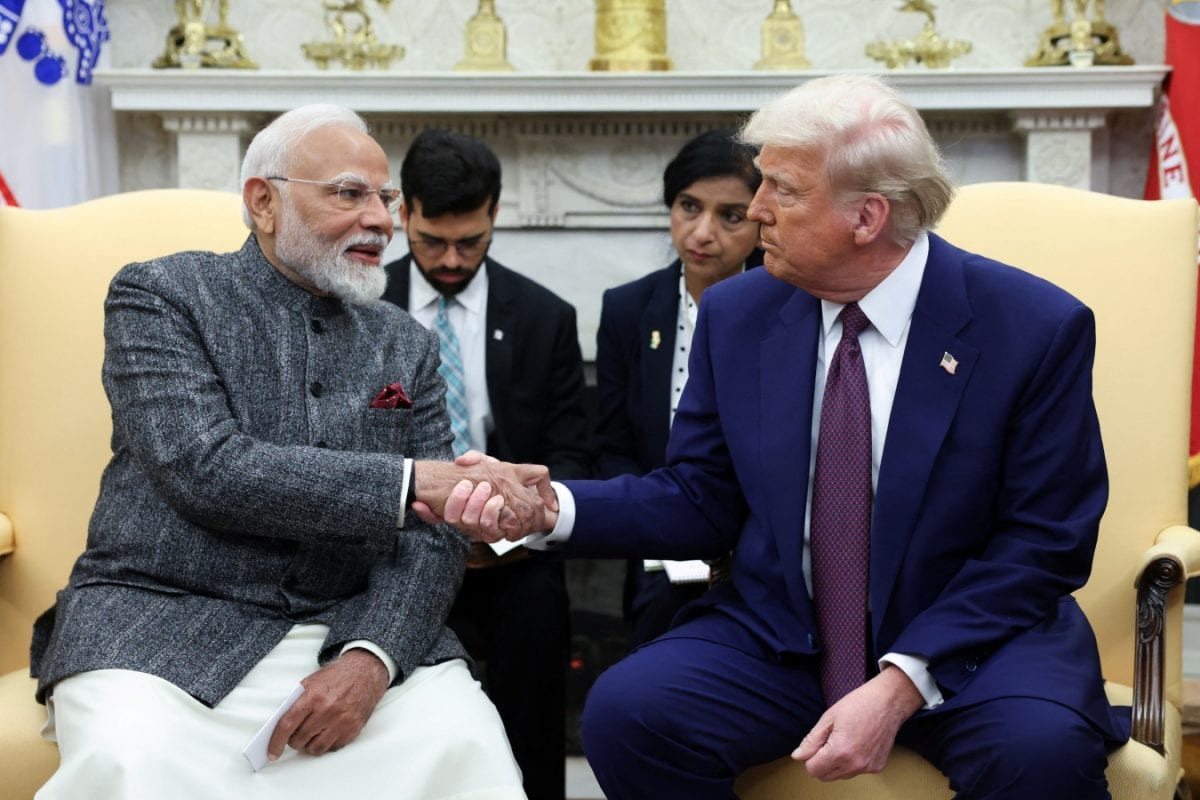As Trump targets China, India becomes the world’s safe bet. Over the past decade, the term “supply chain diversification" has gone from being a technical trade term to a real-time necessity. The Covid-19 pandemic, growing awareness about value-chain vulnerabilities and increasing tensions between Washington and Beijing have brought the world in the thick of an all-out trade war.
Over the past five years, there were notable efforts undertaken to diversify supply chains away from China. Now, with Donald Trump back as President the idea has got a radical shot-in-the-arm. Where world leaders were previously treading with caution, Trump’s return has forced them to act with far greater urgency.

After all, Donald Trump has made it clear that the time to ensure equitable global trade is now, and not a day later. To that end, his sweeping reciprocal tariffs against China present India with a golden opportunity. Global anxiety peaked since early April, when Trump imposed tariffs on nearly all countries of consequence.
Then came the reprieve for all such countries, minus China. As things stand right now, while countries like India face a 10 per cent baseline tariff, Beijing is still figuring out how to cope with the impact that Trump’s 145 per cent tariffs would have not just on its economy, but China’s very identity – which for years has been rooted in domination of global exports. An Opportunity of a Lifetime for India When Trump imposed the tariffs on April 2, many Modi-baiters emerged from the woodworks – almost like clockwork.
They were quick to paint a doomsday picture for India’s economy, not appreciating in the slightest how Trump’s tariffs, in fact, present India with a golden window of opportunity. Why do I say this? Let’s just take a look at India’s growing stature globally. As Trump redefines international trade and deftly pushes countries to shed their China-dependencies, India is emerging as a global favourite.
Today, India is negotiating trade deals left, right and centre, including with the United Kingdom, New Zealand and the European Union. Countries like Bahrain, Qatar, and the Gulf Cooperation Council (GCC) are also showing renewed interest in pursuing deals with India. The cherry on top of it all? India and the United States are rushing against time to sign an early Bilateral Trade Agreement, which will help them both take their trade partnership over the $500 billion mark.
As global trade becomes increasingly weaponised, India’s historically cautious integration into global value chains – often seen as a missed opportunity – now paradoxically positions it for significant gains. While export-driven economies face the direct brunt of tariff wars and geopolitical shocks, India’s resilience is underpinned by a colossal domestic market of 1.4 billion people, ensuring a baseline GDP growth projected around 6.
5-7 per cent even amidst global headwinds. Its trade-to-GDP ratio, hovering near 40-45 per cent, offers relative insulation compared to hyper-globalised nations often exceeding 100 per cent. Look no further than Apple, whose iPhone exports from India have witnessed a 60 per cent jump with a turnover close to Rs 1.
89 lakh crore during FY 2024-25. This acceleration, catalysed by India’s targeted PLI schemes attracting billions in investment from global players like Foxconn, Pegatron, and Samsung, demonstrates momentum that is now exploding. In fact, Apple’s production story in India is just getting started.
Apple’s top global vendor Foxconn is exploring the possibility of setting up a 300-acre manufacturing facility in Greater Noida, most likely along the Yamuna Expressway. The Dragon Falters, the Elephant Advances Even China seems to be acknowledging India’s rising clout. In an unusual diplomatic outreach, President Xi Jinping spoke of a “Dragon-Elephant tango" in a recent letter to President Murmu, while the Chinese embassy suggested that the two Asian giants should unite against American protectionism.
Beneath the rhetoric lies a strategic calculation: China, long reliant on an export-driven model, now eyes India’s consumer base to offset losses from Trump’s 145 per cent tariffs. China has its own reasons to court India. Unlike Beijing, India has not spent decades cultivating an exports-driven economy.
While China stares down the barrel of a potentially crippling 145 per cent levy, India’s 10 per cent baseline – though not insignificant – suddenly looks like a safe harbour for companies scrambling to escape the US-China economic battlefield. That huge gap is incentive enough for many to shift production. The real game-changer, though, could be locking in an early Bilateral Trade Agreement with the US.
Getting that deal signed before other nations vying for Washington’s favour would give India a massive head start, potentially lowering tariffs even further and guaranteeing prime access. Many believe the well-known personal rapport between Modi and Trump is key here, potentially paving the way for a faster deal than usual, translating geopolitical alignment and personal chemistry into a concrete economic win for India. According to a report by the Economic Times, India has zeroed in on 10 key sectors where high tariffs on Chinese goods give it a competitive edge in the American market.
These include apparel, chemicals, plastics, rubber, vehicles (excluding railways), mineral fuels, and pharmaceuticals, among others. In the apparel sector especially, an analysis by NITI Aayog reveals a significant opportunity, since China’s share of US apparel imports stands at 25 per cent, while India commands just 3.8 per cent.
This tariff differential opens up a major chance for India to increase its presence in the US market. Then there is the lucrative electronics sector, where the US imports $900 billion worth of goods annually, and China holds over 50 per cent of the market share. India’s share stands at only 7 per cent.
This gap further underscores the potential for India to increase its exports in the sector, especially as US buyers shift sourcing away from China. The narrative is shifting. No longer just a potential alternative, India is increasingly viewed as a primary destination, actively courted by both East and West for different reasons.
While China faces headwinds that challenge its decades-long export identity, India’s multifaceted appeal – a vast domestic market, burgeoning manufacturing prowess, and shrewd diplomatic positioning – comes into sharp focus. So, the stage is set. Trump’s trade recalibration has dealt the cards, and India holds a surprisingly strong hand – favourable tariffs, strategic alignment, growing industrial muscle, and specific sectoral openings from apparel to electronics.
Even Beijing’s overtures signal India’s rising clout. But opportunity doesn’t knock forever, nor does it automatically convert into dominance. The question is no longer if India can benefit, but how decisively it will seize this generational chance to move from the periphery to the very core of global commerce.
.
Politics

Straight Talk | Tariffs And Tectonic Shifts: Trump’s Trade War Can Catapult India Forward

As Trump targets China, India becomes the world’s safe bet.















